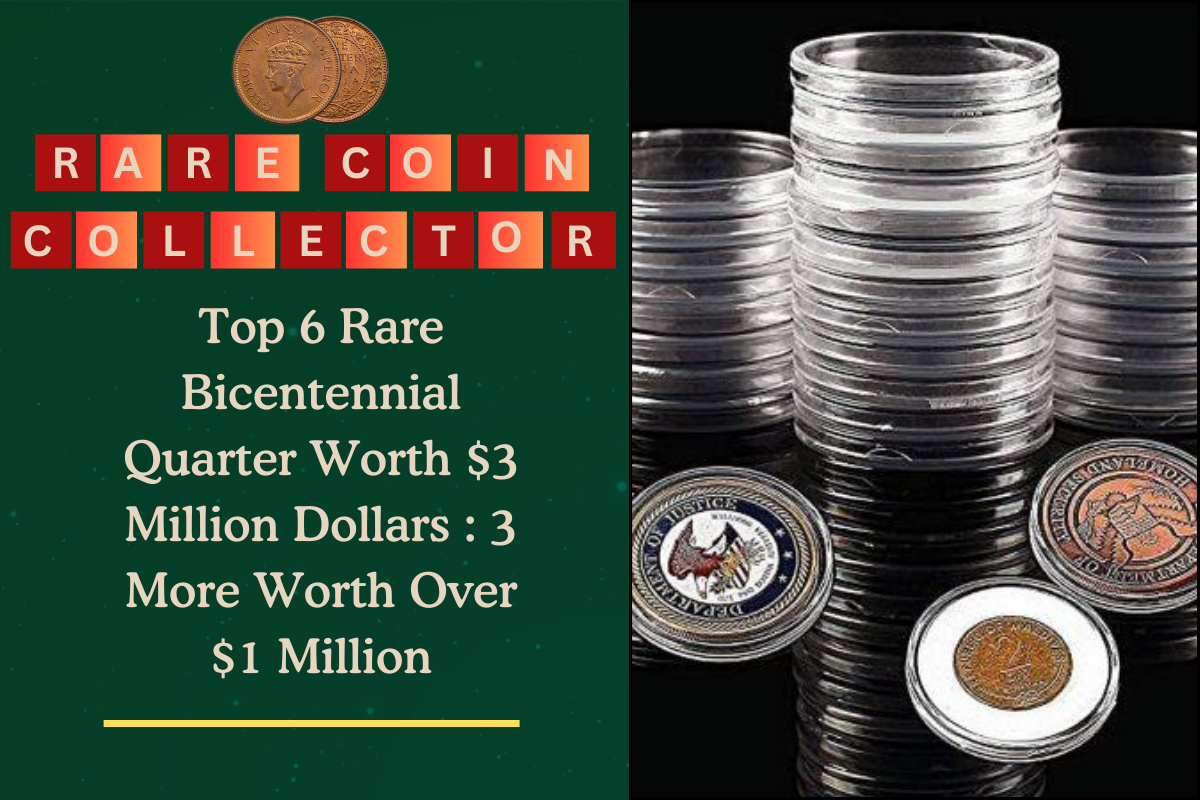Have you ever stumbled upon a coin that turned out to be worth a fortune? It’s like finding buried treasure, isn’t it? Well, if you have a Bicentennial Quarter lying around, you might want to check it twice! In this article, we’re diving into the fascinating world of rare coins, specifically the top six rare Bicentennial Quarters that could fetch you a cool million bucks or more. Let’s get started!
What Is a Bicentennial Quarter?
Before we jump into the nitty-gritty of valuation, let’s take a moment to appreciate what makes the Bicentennial Quarter special. Minted in 1975 and 1976 to celebrate America’s 200th anniversary, these coins feature dual designs: the traditional eagle and the iconic drummer boy. Unlike your everyday quarters, these are steeped in history and traditions that make them unique among collectors.
Why Are Some Bicentennial Quarters Worth So Much?
You might wonder, what gives these quarters their value? Well, like anything else, rarity drives demand. There are numerous factors at play—minting errors, quality of the coin, and collector interest are just a few. If something is hard to come by, collectors will pay top dollar for it. But let’s get to the golden nuggets—literally! Here are the top six rare Bicentennial Quarters that could be worth millions.
1. 1976-S Proof Bicentennial Quarter
Topping our list is the 1976-S Proof Bicentennial Quarter. Coins in pristine condition, especially those graded at a perfect 70 by the Professional Coin Grading Service (PCGS), can fetch upwards of $3 million. That’s right; it’s a jaw-dropper! The beauty of this coin lies not just in its design but also in its rarity, making it a collector’s dream.
2. 1976-D Bicentennial Quarter with Double Die Obverse
Next up is the 1976-D Quarter with the Double Die Obverse error. Think of it as the “oops” coin of the collection! This Quarters wasn’t meant to have the doubling on Liberties’ motto, but it slipped through the cracks—talk about a happy accident! Coins in this category can be valued at around $1.5 million, making it a prized possession for numismatists.
3. 1976-S Flat MS-65 Silver Quarter
It wouldn’t be a complete list without mentioning the 1976-S Flat MS-65 Silver Quarter. With fewer than 200 known stocks, its rarity catches the eye of avid collectors. Valued at around $1.2 million, this coin isn’t just a conversation starter; it’s a ticket to a world of wealth and history!
4. 1976-D Uncirculated Quarter
The 1976-D Uncirculated Bicentennial Quarter is another hot commodity, hitting the market around the $1 million mark. These lovely coins were intended for collectors and weren’t meant to be in circulation, adding to their scarcity.
5. 1975-S Proof Bicentennial Quarter
Don’t overlook the 1975-S Proof Bicentennial Quarter, either! With some pieces trading for over $800,000, this coin stands out with its significant historical context and elaborate design. Proof coins are crafted with care and precision, making them a favorite among coin enthusiasts.
6. 1976 Bicentennial Quarter Errors
Last but not least, we can’t forget about various error coins in this series. These oddities, like incorrect mint marks or unusual strikes, can climb in value, often reaching upward of $500,000. If you stumble across what you think is an unusual Quarter, it might just be your ticket to the millionaire’s club!
Conclusion
Collecting coins can be an exhilarating journey—one that’s full of surprises! Those rare Bicentennial Quarters, especially the top six we’ve highlighted, showcase just how rewarding it can be to get into numismatics. Whether you’re diving into your piggy bank or scouring yard sales, keep an eye out for these treasures. Who knows—you might just strike it rich!
Frequently Asked Questions
1. How can I identify a rare Bicentennial Quarter?
Look for specific features like mint marks, errors, and grades. Coins that are in pristine condition or have unique characteristics are typically more valuable.
2. Where can I buy or sell rare coins?
You can buy or sell rare coins through various channels, including coin shows, online marketplaces, and reputable numismatic dealers.
3. What’s the best way to store my coins?
Store your coins in a cool, dry place, away from direct sunlight. Consider using coin holders or albums to prevent scratching and wear.
4. How do I get my coins appraised?
Seek out a professional coin appraiser or a local coin shop. They’ll provide insights on your coin’s condition and market value.
5. Can I clean my coins before selling them?
It’s generally not recommended to clean coins, as it can damage them and lower their value. Always consult a professional if you’re unsure.
